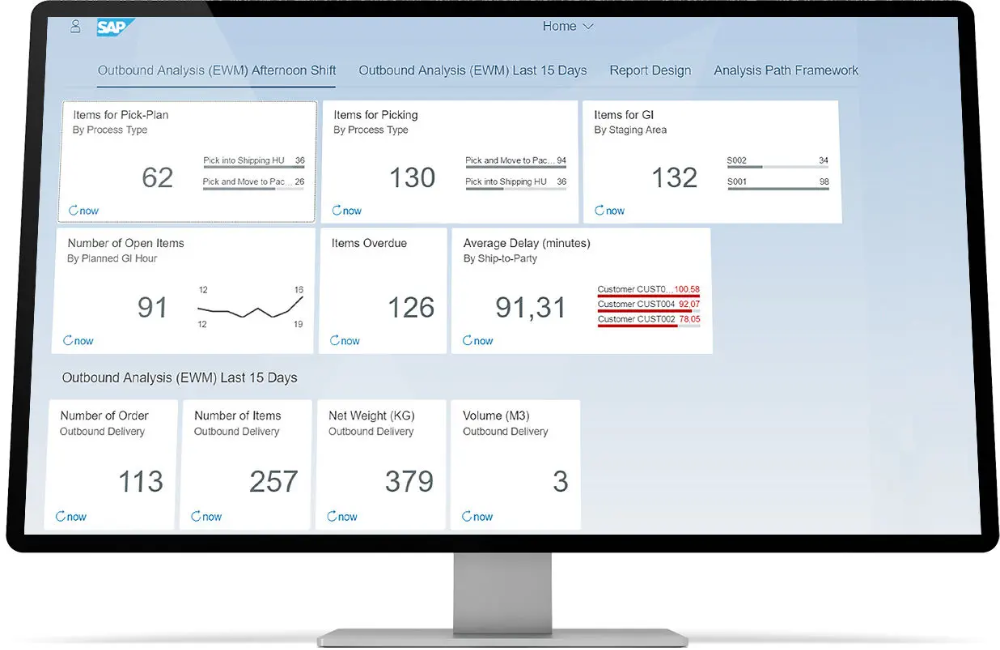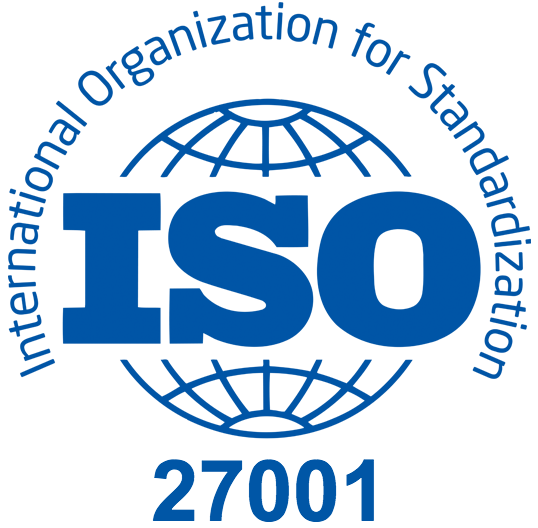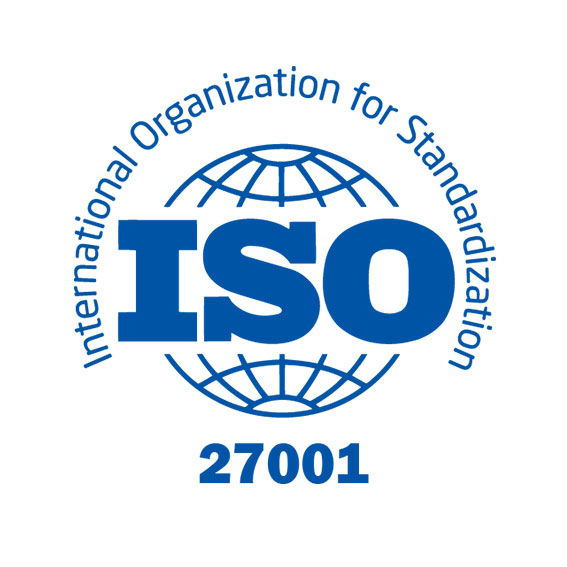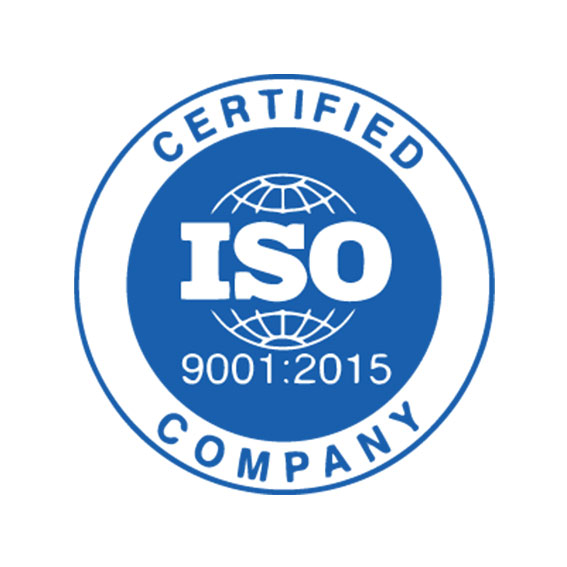Build a Platform Strategy for Supply Chain Execution
Warehouse operations can no longer function in isolation, focusing solely on internal procedures. To stay competitive, you need an integrated logistics solution that streamlines operations, accelerates order fulfillment, adapts to changes quickly, and provides full visibility into orders and costs across the logistics network.
While many vendors simply piece together existing solutions, SAP takes a different approach—harmonizing your logistics processes with a unified platform strategy. This approach integrates SAP EWM, SAP Transportation Management, and SAP Business Network for Logistics, leveraging intelligent technologies like IoT, machine learning, and blockchain. Together, these solutions help orchestrate warehousing and logistics within a cohesive, executable vision.
With SAP’s single technology logistics platform, you can align all logistics processes into a seamless operation. This ensures faster, more agile fulfillment experiences for customers while optimizing logistics operations, enhancing cost visibility, and enabling scalable growth—all while maintaining a low total cost of ownership.
By synchronizing logistics with the rest of your business, you gain real-time process integration, ensuring accurate deliveries and up-to-date insights through a centralized data platform for systems, partners, and processes.
Orchestrate Goods Movement and Storage Processes
With SAP EWM, you can efficiently manage inbound and outbound processing, as well as the storage and retrieval operations in between. The application automates goods movement and inventory management, meeting the demands of complex workflows and high-volume warehouses. It seamlessly integrates with the latest technologies, including pick-by-voice, augmented reality, RFID, material handling equipment, autonomous vehicles, and warehouse robotics. This allows both employees and robots on the floor to gain real-time operational insights, enhancing accuracy and efficiency.
The SAP Warehouse Operator mobile app extends these capabilities by enabling employees to use familiar smart devices, accelerating onboarding and improving overall productivity.
SAP solutions continuously evolve to meet emerging warehousing demands, introducing innovations powered by cloud computing, Big Data, analytics, and smart warehouse technologies. The application provides end-to-end visibility into inventory and logistics, supporting advanced capabilities such as value-added services, kitting, labor planning, yard management, and comprehensive analytics.
Additionally, SAP EWM streamlines goods movement across procurement, shipping, production supply, and receipt processes, integrating seamlessly with quality management, transportation, and trade compliance. It also supports key functions like cross-docking, import and export management, quality checks, picking from goods receipt, and push deployment, ensuring a fully optimized warehouse operation.
Direct Storage and Internal Processing
Enhance inventory management and internal warehouse movements to maximize facility utilization and maintain precise tracking, even at the most granular level. SAP EWM enables you to optimize storage and internal processing with capabilities such as:
- Streamlined physical inventory processes and record verification to minimize counting efforts and maintain accurate inventory balances
- Slotting, replenishment, rearrangement, and stock consolidation to improve storage efficiency and facility utilization
- Kitting to stock and value-added services, enabling faster time-to-shelf, customized product kits, and personalized deliveries
- Automated warehouse billing for seamless, activity-based electronic billing of warehouse costs to customers and payments to warehouse vendors
With SAP EWM, you can drive efficiency across inventory operations, reduce manual efforts, and create a more agile and cost-effective warehouse environment.
Fine-Tune Outbound Processes to Maximize Speed and Agility
Enhance customer service, accelerate order fulfillment, and minimize errors in picking, shipping, and billing by leveraging advanced outbound processing capabilities in SAP EWM. Key features include:
- Transportation unit management to efficiently coordinate vehicle flow within the warehouse, supporting seamless shipping and receiving operations
- Warehouse order creation, wave management, optimized route planning, and picking bin determination to ensure timely order fulfillment
- End-to-end picking, packing, staging, loading management, and goods issue for streamlined outbound logistics
- Customer-specific kitting to enable personalized order fulfillment
- Direct outbound delivery for faster order processing
- Production supply, staging, and consumption synchronization to maintain accurate inventory visibility between the warehouse and production
With SAP EWM, you can improve order fulfillment KPIs, shorten delivery lead times, and reduce inaccuracies while scaling operations to support increased demand and multiple fulfillment channels.
Enable Process Optimization
SAP EWM also provides advanced cross-functional capabilities for material flow, including opportunistic and planned cross-docking, management of stock-specific units of measure, and labor management. It features built-in optimization for work package creation, resource assignment, and stock consolidation, ensuring efficient warehouse operations.
Additional extended functionalities include packaging specification management, batch and serial number tracking, catch weight management, and dock appointment scheduling to streamline logistics.
With comprehensive analytics and traceability, SAP EWM delivers deep insights into operations, helping you fine-tune processes while reducing total cost of operations and total cost of inventory.
The SAP Warehouse Insights solution further enhances warehouse efficiency by enabling real-time visualization, resource optimization, and process analysis. By leveraging IoT services, you can monitor resources in real-time, spot potential risks, and proactively mitigate disruptions for seamless logistics operations.
Automate the Warehouse
The material flow system in SAP EWM allows for seamless control and monitoring of automated storage and retrieval systems. It provides the ability to manage programmable logic controllers for various types of storage, including high-rack, small-parts, and shuttle warehousing. This system ensures effective movement of units in automated environments, managing conveyor segments and offering visibility at multiple levels.
In addition, SAP EWM supports the management of material handling equipment used in distribution vehicles, sorters, and label applicators, covering pallets, containers, and cartons, as well as pick, pack, and pass technologies.
Employees can access and perform tasks through a variety of mobile devices such as handheld RF terminals, tablets, smartphones, wireless scanners and printers, and wearable devices like voice headsets and smart glasses. This flexibility helps enhance employee engagement and efficiency by leveraging familiar technologies for improved performance and ease of use.
Support Intelligent Warehousing with SAP S/4HANA
SAP EWM is integrated with SAP S/4HANA, providing the opportunity to streamline your IT infrastructure while boosting performance and speed. It enables you to leverage advanced technologies such as in-memory analytics and modern user interfaces. With SAP EWM, you can choose between a decentralized deployment for large-scale, high-volume warehouses or an embedded solution for smaller to midsize enterprises. The cloud deployment model further lowers the total cost of ownership, offering scalability and faster time to value.
SAP Best Practices packages provide preconfigured solutions and building blocks for SAP EWM, helping accelerate the implementation process. Additionally, SAP offers flexible licensing options, allowing you to deploy SAP EWM as an embedded application with functionality tailored to meet specific business needs.
Basic warehouse management in SAP EWM focuses on stock transparency and control, offering features for inventory management, inbound and outbound processing, goods movement, and reporting. Advanced warehouse management goes further by optimizing warehouse processes and adding functionalities like material flow control, yard and labor management, value-added services, kitting, cross-docking, and warehouse billing. These two levels are essential for progressing toward supply chain convergence within SAP S/4HANA.





























